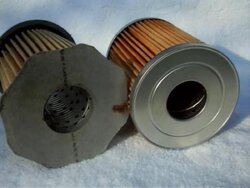It's convoluted. Overall, all oil does thicken when it gets colder. However, a multi grade oil like a 20W-50 will pour like a 20 weight oil at the colder temp but pours like a 50 weight oil at 100c. So therefore the oil technically "thickens" as it gets warmer despite the fact that 100c oil even at 100c probably pours like water and 5c pours like molasses.
The question about what provides better protection at say 300f really highlights the multi grade oils ability to change its viscosity which is heat dependant. The more heat the higher viscosity (up to a practical limit).
Straight weight oil does not undergo a change in viscosity with change in temperature.
Clear as mud?
Might help for ease of understanding, instead of saying it “thickens”, say, as oil thins as the temperature increases but a multi weight oil thins at a slower rate than a straight weight.
Sent from my iPhone using Tapatalk Pro



